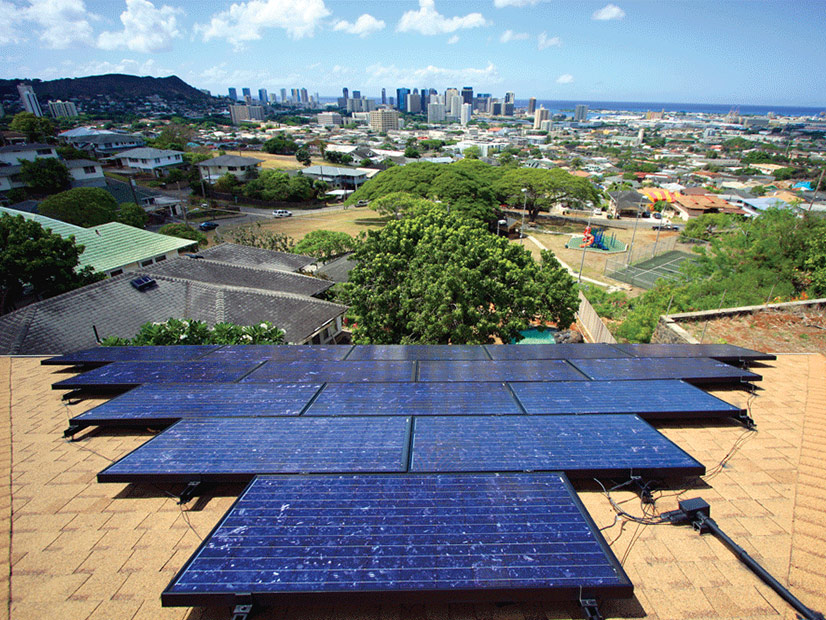Hawaiian Electric Company (HECO) is asking Hawaii’s Public Utilities Commission for $25 million to install consumer solar and battery infrastructure to help mitigate the energy shortfalls expected to occur after AES shuts down its coal plant on Oahu next year.
The request comes three months after the PUC launched a proceeding that directed the utility, distributed energy resource providers and Hawaii’s Division of Consumer Advocacy (CA) to develop proposals for an emergency demand response program (EDRP) for Oahu in preparation for the closure of the 203-MW Hawaii Power Plant. (See Discontent Mounts over HECO Coal Plant Closure Plans.)
The PUC last week issued Order 37816, which approved the establishment of an EDRP and longer-term scheduled dispatch program (SDP) for Oahu, authorized to enroll up to 50 MW of resources. The order detailed the recommended proposals without approving any of them, instead directing HECO to use the recommendations to develop an implementation plan.
The order also denied HECO’s request to increase the enrollment capacity of its Fast DR remote dispatch program from 7 MW to 12 MW, noting that the program is under-enrolled with a current capacity of 4. 5MW. The commission said it would revisit expansion once the enrollment reaches 7 MW.
The requested $25 million in HECO’s proposal would be put toward two initial phases of a Bring Your Own Device (BYOD) program, a long-term effort to encourage customers to install DER equipment in their homes that would be available for demand response operations. The program would cover the acquisition of either battery-only (for existing DER customers) or battery-plus-solar systems.
“Participants in the initial Emergency DR (‘EDR’) phase of the long-term BYOD program who are delivering scheduled dispatch would be required to transition to a BYOD long-term solution with remote dispatch capability during the years of 2024-2025,” the order said.
The cost of the program would be recovered through a demand-side management surcharge.
The DER companies suggested three programs: scheduled dispatch (load-shift peak reduction), BYOD Level 1 (load-following peak reduction), and BYOD Level 2 (remote emergency dispatch). They said the scheduled dispatch and BYOD Level 1 plans can be implemented immediately. The companies also recommended a $750/kW upfront customer incentive, saying it “is the amount necessary to motivate a Scheduled Dispatch customer to elect to install a battery and set it to fully dispatch on a daily basis.”
The CA recommended a broader portfolio approach “which includes the consideration of new programs as well as the modification and expansion of existing programs.” It suggested new programs in either an export-only or export and grid services category, which amount to creating payment incentives for time-of-delivery (TOD) and critical peak value (CPV) pricing to reduce peak load.
The CA also recommended a “Scheduled Operation” program that would require DER customers to “charge their batteries daily at the ‘lowest-value’ hours and dispatch their batteries for a two-hour period during the ‘highest-value’ hours determined for each month.” This program would last 10 years and include an upfront enrollment incentive of $554/kW.
A modified Scheduled Operation-plus-CPV program would provide an upfront enrollment incentive of $372/kW plus the suggested CPV incentive rate of $291/kW for a total of $663/kW.
The PUC ordered HECO to use the recommendations to file an SDP Implementation Plan by June 18, to be reviewed for a launch date of July 1. It also ordered the utility to “commence replacement activities as soon as possible” to increase Fast DR capacity to 7MW.


